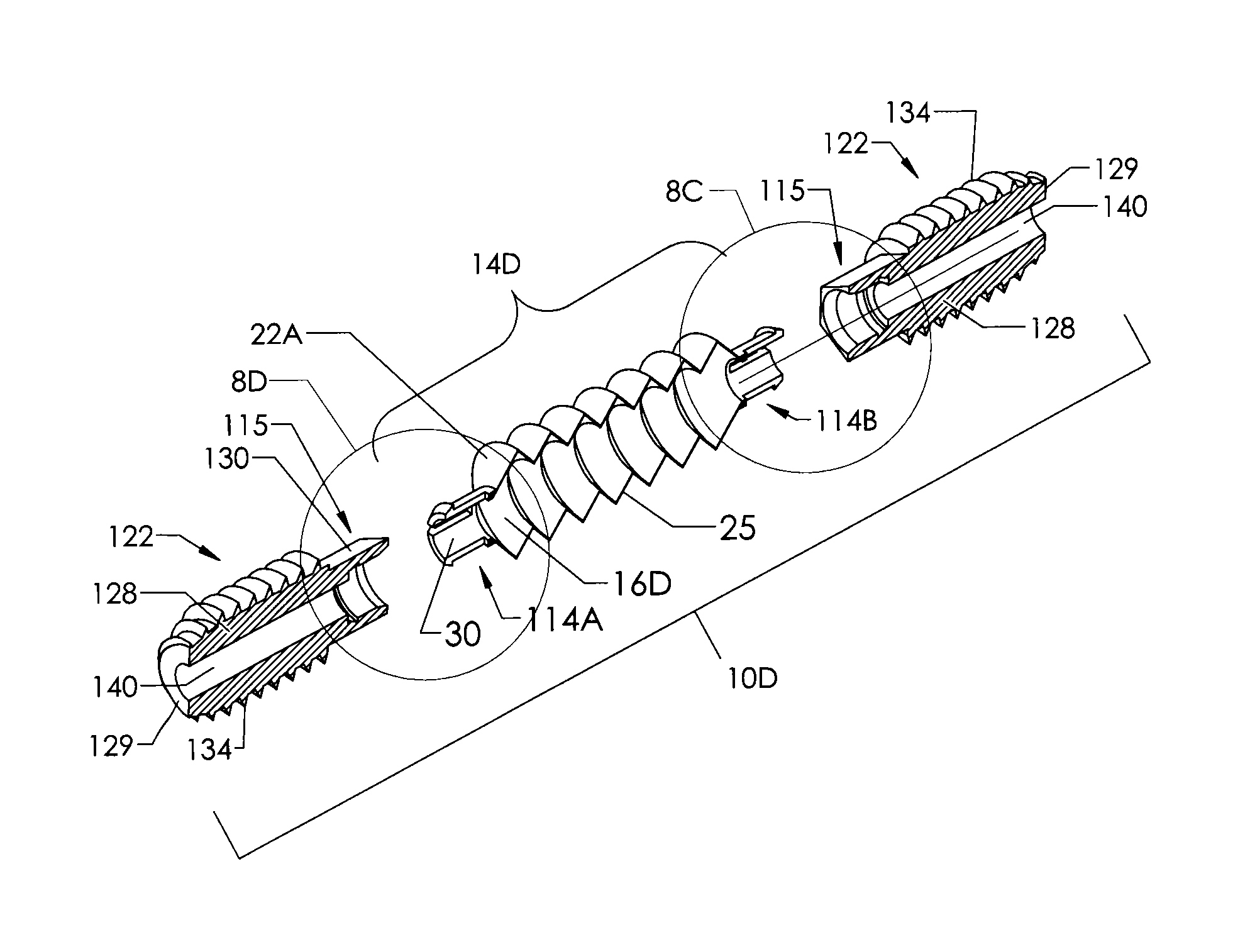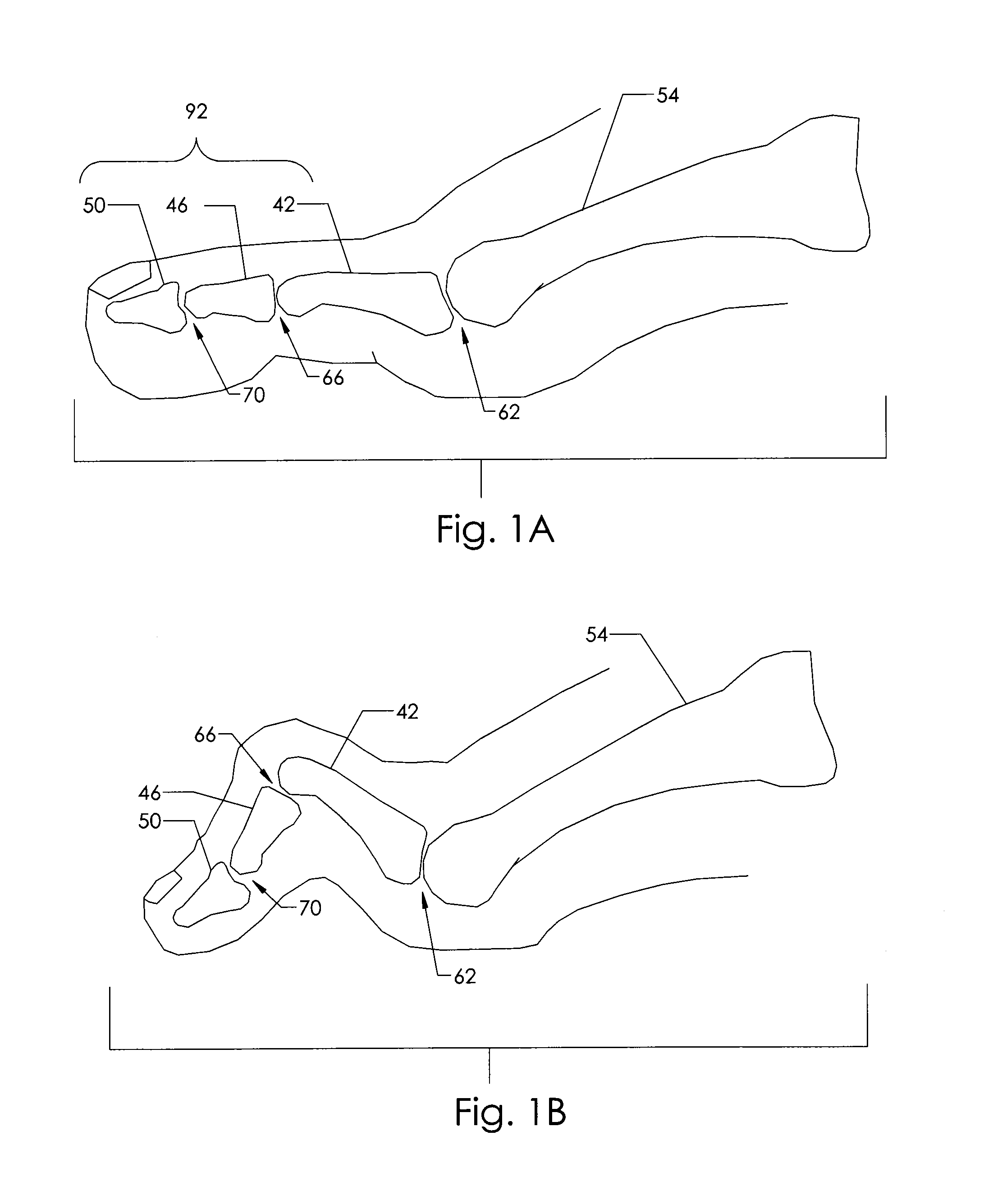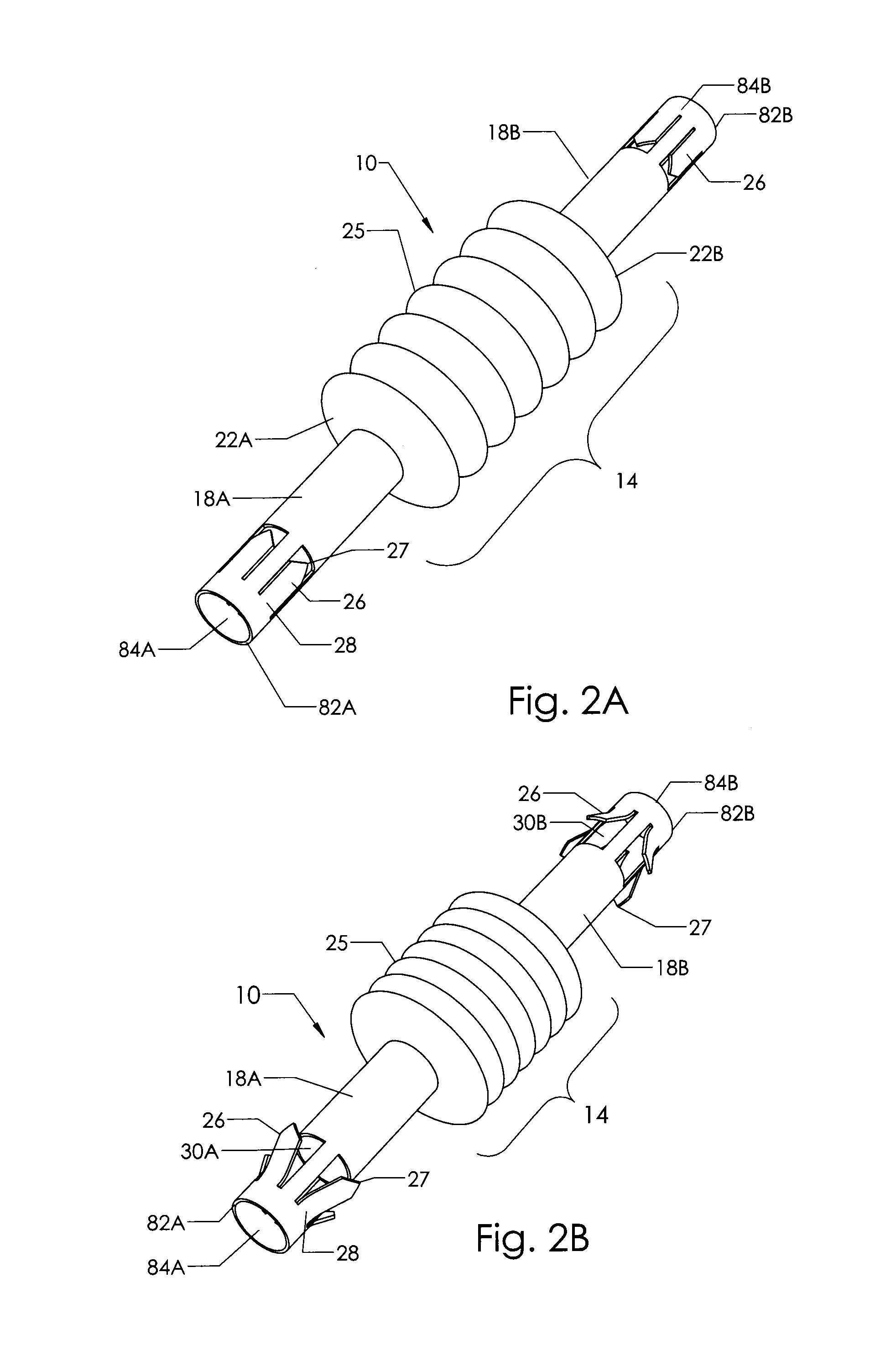Fasteners with shape changing bellows and methods using same
a technology of shape changing bellows and fasteners, which is applied in the field of fasteners with shape changing bellows and methods using same, can solve problems such as human or animal use, and achieve the effects of preventing slipping or accidental displacement of implants, preventing damage to adjacent joints, and accurate placemen
- Summary
- Abstract
- Description
- Claims
- Application Information
AI Technical Summary
Benefits of technology
Problems solved by technology
Method used
Image
Examples
first embodiment
Operation of First Embodiment
[0065]Fastener 10, as well as the other embodiments described herein, may be made from a shape memory alloy, such as Nitinol, though there are other shape changing materials available that also may be used. When any of these embodiments are used, say for a surgical procedure like a hammertoe correction, the properties of the metal or other material allow it to exist in different shapes at different temperatures. For example, when the Nitinol embodiment is moved from a cool or cold state, at which time it is in its martensite phase, and then implanted in the body and warmed to body temperature, it will undergo a change in its shape as it transforms to its austenite phase.
[0066]As shown again in FIGS. 2A and 2B, bellows 10 will shorten along its axial length, like an accordion, during its phase change from a martensitic phase to an austenitic phase. At the same time, barbs 26 on sleeves 18A and 18B will go through a phase change as well, expanding radially...
second embodiment
Operation of Second Embodiment
[0077]The application of the second embodiment requires the proximal phalanx and the middle phalanx to be prepared with angular cuts. The cut surface of the proximal or middle phalanx, instead of being cut perpendicular to the long axis of the bone, is cut at an angle to the long axis. The sum of the angles cut into both phalanxes is such that it matches the built-in angle of the embodiment; say ten to fifteen degrees for a toe or whatever the angle of the embodiment.
[0078]The step wise application of the embodiment is otherwise the same as FIGS. 5A through 5F. The proximal phalanx is cut and the middle phalanx is cut, each at one-half of the desired full angle. A guide wire is placed axially into the proximal phalanx and the phalanx is then counterbored to create a hole for the implant. The guide wire is then removed and driven axially into the middle phalanx and out the end of the toe. Again the guide wire is positioned so that it is nearly flush with...
third embodiment
Operation of Third Embodiment
[0082]The joint surfaces are prepared as before for the second embodiment. Proximal phalanx 42 and middle phalanx 46 are surgically prepared as before as shown in FIG. 6B. Here abutment surface 78 of proximal phalanx 42 and abutment surface 74 of middle phalanx 46 are prepared so they are at an angle to the long axis of each phalanx respectively. If the surgeon or user wants to fuse the two bones at ten degrees, for instance, then the cut surfaces must be prepared so that the angle formed between the long axes of proximal phalanx 42 and middle phalanx 46 equals ten degrees when both cut surfaces are placed end to end. For example, one surface could be cut at zero degrees or perpendicular to the long axis of the phalanx while the surface of the other phalanx is cut at ten degrees. Alternatively, both phalanges could be cut equally at five degrees. The surgeon will need to choose the implant that is designed to bend ten degrees.
[0083]If the surgeon wants t...
PUM
 Login to View More
Login to View More Abstract
Description
Claims
Application Information
 Login to View More
Login to View More - R&D
- Intellectual Property
- Life Sciences
- Materials
- Tech Scout
- Unparalleled Data Quality
- Higher Quality Content
- 60% Fewer Hallucinations
Browse by: Latest US Patents, China's latest patents, Technical Efficacy Thesaurus, Application Domain, Technology Topic, Popular Technical Reports.
© 2025 PatSnap. All rights reserved.Legal|Privacy policy|Modern Slavery Act Transparency Statement|Sitemap|About US| Contact US: help@patsnap.com



